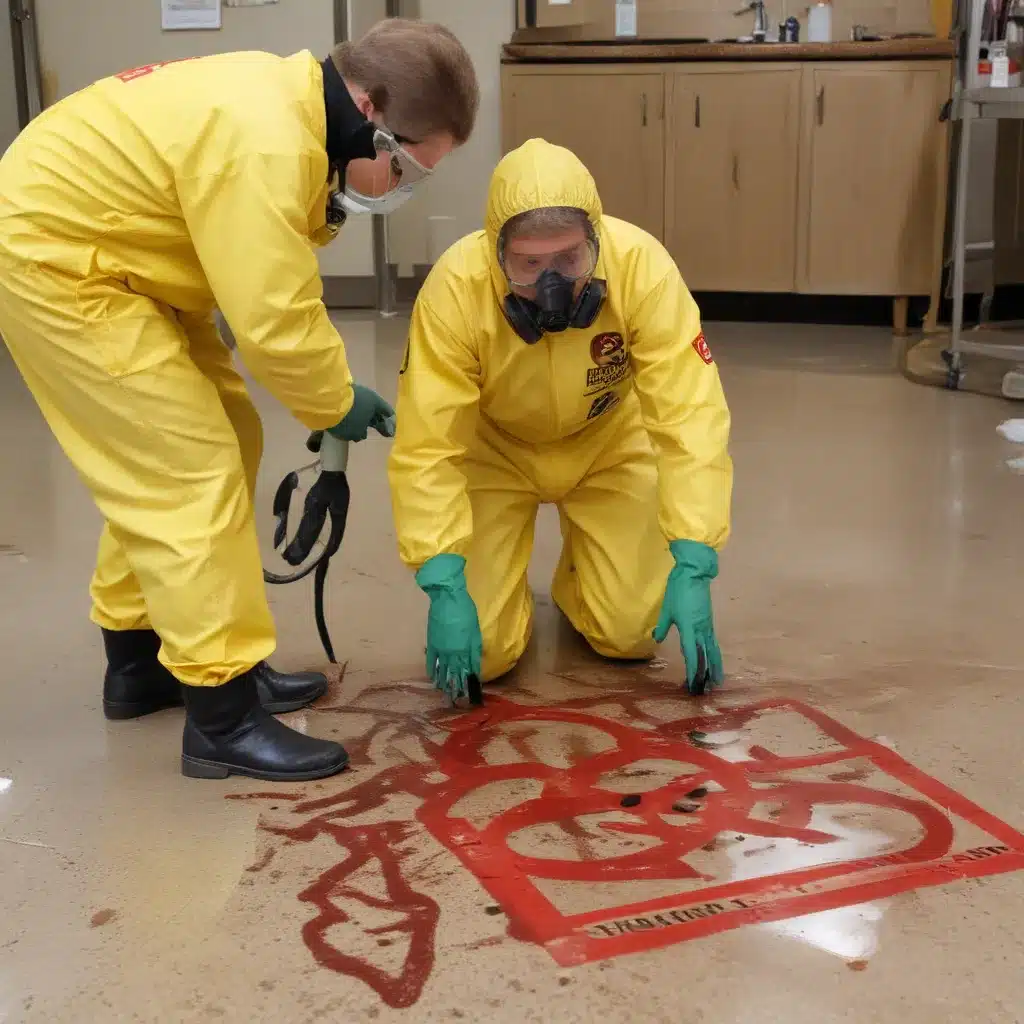Lessons Learned from Spill Experts
You know, ever since I joined the Adam Cleaning team in Nottingham, I’ve come to realize that cleaning up biohazard spills is a whole different ball game. It’s not just about grabbing a mop and some bleach – there’s a whole science and set of protocols behind it.
The way I see it, dealing with biohazards is a bit like defusing a bomb. One wrong move and boom – you’ve got a major cleanup (and potential health) disaster on your hands. That’s why I’m always eager to learn from the experts, to make sure I’m doing things the right way.
Recently, I had the chance to dive into some top-notch resources on chemical spill response, courtesy of the American Chemical Society and the NYC Department of Health. Let me tell you, my eyes were opened wide! There’s a whole world of considerations that go into handling biohazards safely and effectively.
Anticipating the Risks
The first thing I learned is that preparation is key. According to the ACS guide, every lab should have written spill response procedures that detail the initial steps to take. This includes things like staff responsibilities, communication methods, and instructions on using the right personal protective equipment (PPE).
It’s all about anticipating the risks ahead of time. You need to evaluate the hazardous properties of the chemicals you’re dealing with – things like flammability, toxicity, and reactivity. Armed with that knowledge, you can develop appropriate response plans.
For example, let’s say you’ve got a spill involving a flammable liquid. Well, the first priority is to eliminate any potential ignition sources in the area. And if the spill is large enough to present a fire or explosion risk, that’s when you call in the experts instead of trying to tackle it yourself.
Determining Simple vs. Complex Spills
Another crucial piece of advice I picked up is to have a clear process for distinguishing “simple” spills from “complex” ones. The NYC Health Department guide outlines a three-step evaluation:
- Assess the risks to human health, property, and the environment.
- Evaluate the quantity of the spilled material.
- Consider the potential broader impacts.
If the spill checks all those boxes as “low-risk,” then you’ve got a simple situation that can likely be handled in-house. But if any of those factors indicate a more serious hazard, it’s time to call in the professionals at Adam Cleaning or your local hazmat team.
Proper Cleanup Procedures
Of course, once you’ve determined that a spill is simple enough to tackle yourself, you need to know the right cleanup steps. OSHA has some great guidance on that front.
The key is to work methodically and safely. First, you’ll want to prevent the spread of any vapors or dusts by increasing ventilation. Then, if it’s an acid or base spill, you can try neutralizing it with the appropriate agent.
From there, it’s all about controlling the liquid – creating a dike to contain the spill, then using absorbents to soak it up. The contaminated materials need to be collected, packaged, and disposed of properly as hazardous waste.
And let me tell you, those last steps are critical. I’ve seen way too many folks try to take shortcuts or improvise, only to end up making a bigger mess. That’s why it’s so important to have the right training and equipment on hand.
The Value of Partnerships
One thing that really struck me in my research is the importance of building strong relationships with emergency responders and regulatory authorities. The EPA emphasizes the need for preplanning with local agencies, so everyone is on the same page when a spill occurs.
After all, these folks are the true experts when it comes to hazardous materials. They have the specialized knowledge and resources to handle the most complex and dangerous situations. So why not leverage that expertise, rather than trying to go it alone?
Plus, maintaining open lines of communication can go a long way in avoiding unnecessary panic or confusion. I’ve heard horror stories of emergency crews showing up to a “simple” spill, simply because the facility didn’t properly notify the right authorities. Talk about a recipe for wasted time and resources!
Continuous Improvement
At the end of the day, I realize that dealing with biohazard spills is an ongoing learning process. No matter how much training and preparation you have, there’s always room for improvement. That’s why I’m always eager to stay on top of the latest research and best practices.
And you know what? That mindset has really paid off for the team at Adam Cleaning. By constantly re-examining our spill response procedures and collaborating with the experts, we’ve been able to handle even the trickiest situations with confidence and efficiency.
So if you’re ever faced with a biohazard spill, don’t panic – just remember to think it through step-by-step. Assess the risks, follow the proper protocols, and don’t be afraid to call in reinforcements when needed. With the right approach, you can turn a potentially disastrous situation into just another day at the office.







